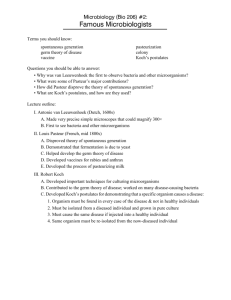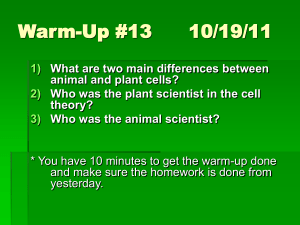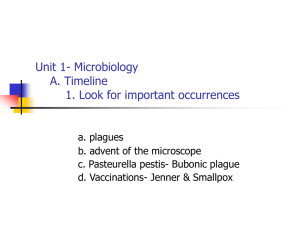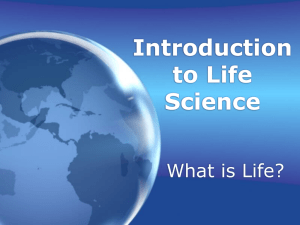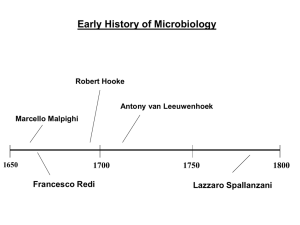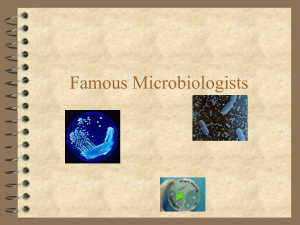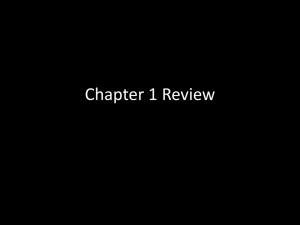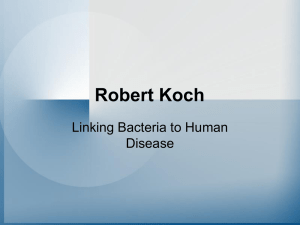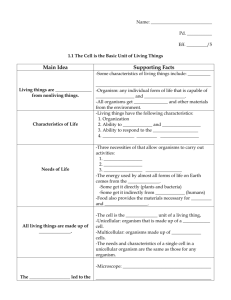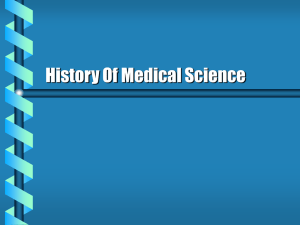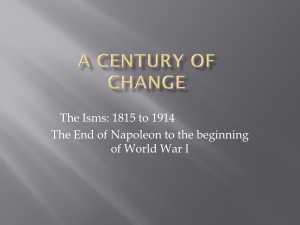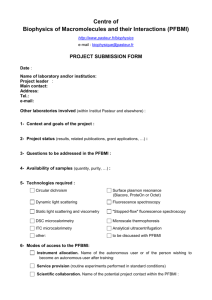1. History of Microbiology
advertisement
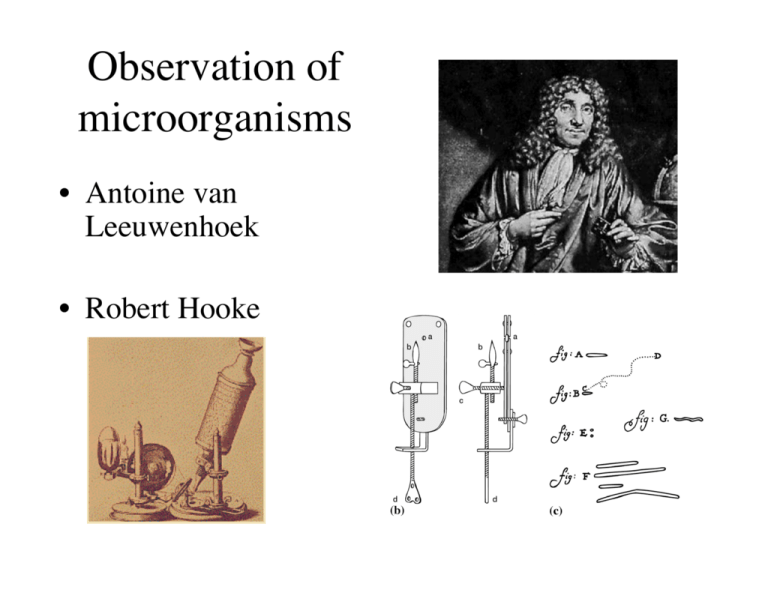
Observation of microorganisms • Antoine van Leeuwenhoek • Robert Hooke Spontaneous generation • • • • • Francesco Redi (1688) John Needham (1745) Lazzaro Spallanzanni (1799) Rudolf Virchow (1858) Louis Pasteur (1861) Francesco Redi Pasteur’s experiment dispelling spontaneous generation Germ theory of disease • • • • • • • Early historical references Giralolamo Fracastoro (1546) Antonio Bassi (1844) Ignaz Semmelweis (1850) John Snow (1854) Joseph Lister (1867) Robert Koch (1877) Koch’s postulates • 1. Specific organism must be isolated from sick, but not healthy individuals • 2. Must be able to cultivate organism outside of the host in pure culture • 3. When introduce organism into susceptible host, it shows signs of disease • 4. The same organism must be isolated from diseased host and cultured Koch’s other credits • Culture conditions for bacteria – Fannie Eilshemius – Richard Petri • 1882- identification of Mycobacterium tuberculosis • “Golden Age of Microbiology” begins Pasteur’s other credits • • • • Fermentation Pasteurization Aseptic technique Vaccination – Chicken cholera – Anthrax – Rabies Virology • Martinus Beijerinck and Dmitri Ivanowsky (l890’s) • Walter Reed and James Carroll (1900) • Frederick Rous (1911) • Wendell Stanley (1935) Vaccination • Edward Jenner (1798) • Louis Pasteur (1880) • Emil von Behring and Shibasaburo Kitasato (1890) Antibiotics • Alexander Fleming (1928) • Selman Waksman (1944) Central Dogma Frederick Griffith (1928) Fig. 11.1 Hershey and Chase (1952) Fig. 11.3 Jacob and Monod (1961) Fig. 12.27 Molecular Biology and Biotechnology • • • • • • • 1969-Restriction endonuclease cloned (Arber & Smith) 1970-Reverse transcriptase (Temin & Baltimore) 1973-Recombinant plasmid (Cohen & Boyer) 1977-DNA sequencing (Gilbert & Sanger) 1982-Commercial production of insulin 1984-Polymerase chain reaction (PCR) (Mullis) 1995-Entire genome sequenced (Haemophilus influenzae)
